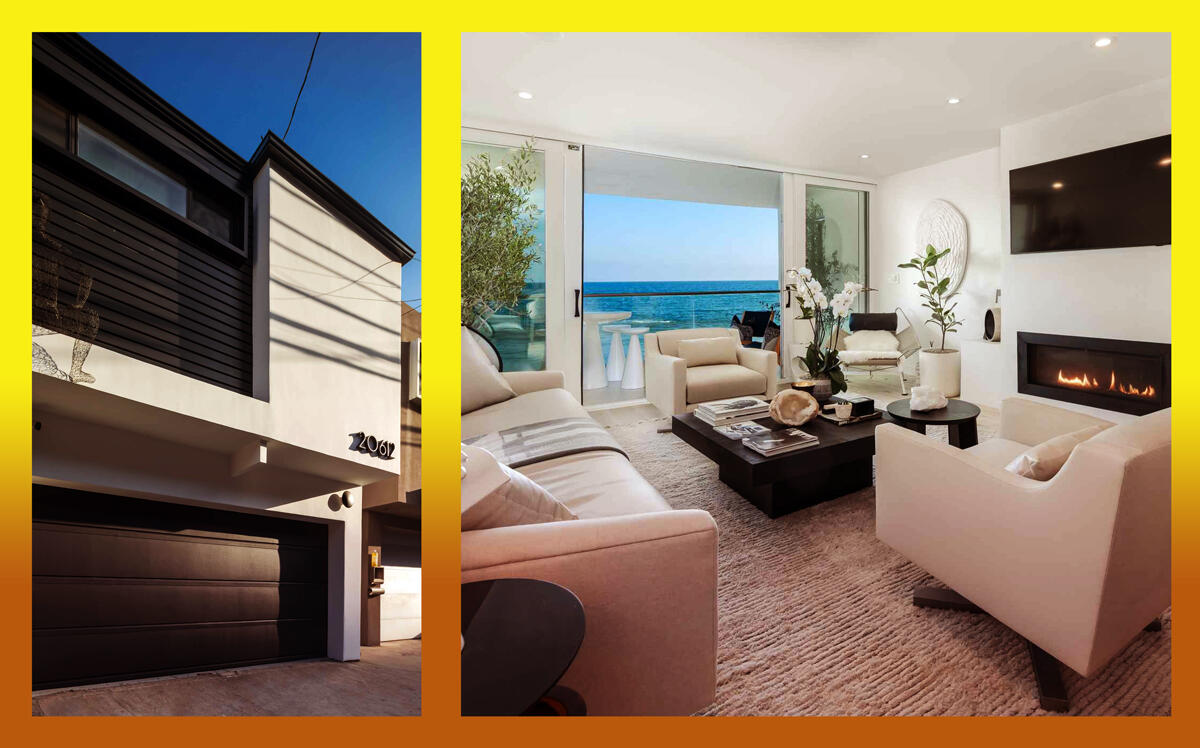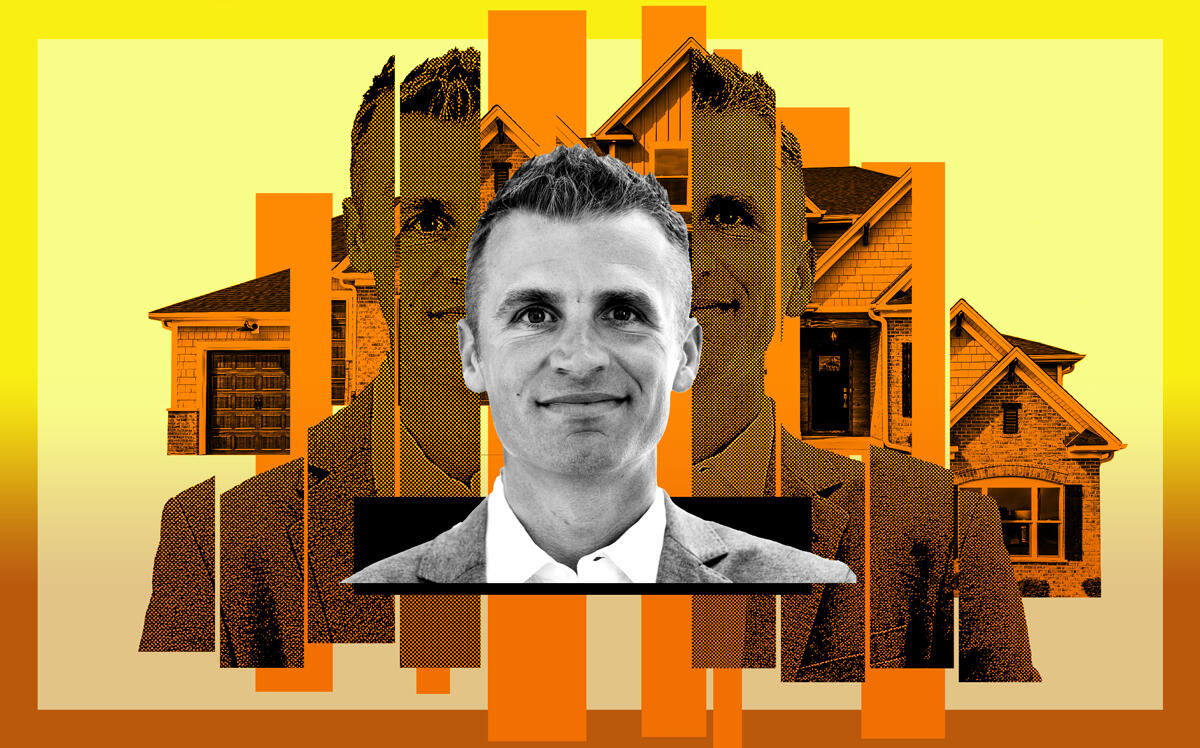Pacaso is in the eye of two torrential storms.
The housing market is one of the most turbulent in recent memory, with sales volume slowing faster than it did even after the global financial crisis. The proptech sector has also taken a battering, with valuations of public companies down up to 90 percent and mass layoffs.
So, as a proptech startup focused on housing — specifically on co-ownership of second homes — Pacaso has its work cut out.
The company, which last year claimed to be the fastest U.S. startup to reach a unicorn ($1 billion) valuation, has had to pump the brakes on growth and prioritize getting into the black. In October, it announced layoffs of about 100 staffers, or nearly a third of its workforce, and said it would pause expansion into new markets.
I’ve been fascinated for a while by Pacaso’s approach to treating the home as a fractional investment — buyers can purchase one-eighth interests in properties, which Pacaso then manages and helps the buyers divvy up their allotted days — and have been following its wild ride, from scoring more than $200 million in venture capital to tussles with homeowners and elected officials in from Napa Valley to Santa Barbara. It’s a company that’s at the center of what I’ve been thinking of as the “home as a commodity” challenge, and those interested in the future of homeownership are watching it closely.
Does Pacaso’s model work — as a real business, not a venture-funded growth machine — when interest rates are surging and the housing market is so weird?

Pacaso co-founder Spencer Rascoff
To help answer that question, I spoke with CEO Austin Allison, a Zillow alum who founded Pacaso in late 2020 with former Zillow CEO Spencer Rascoff. Allison has had to hard-pivot the company from growth to financial prudence while continuing to be an evangelist for a sector he’s trying to create from scratch. It’s a tough job, but he seems on board with that.
“The environment that we started the company in really is irrelevant in the context of the mission and the reason why we started the company,” Allison told me. “I’d start the same company today.”
This interview has been condensed and edited for clarity.
You had hypergrowth in a market which looked dramatically different from the market we’re facing now. How are you thinking about your business?
The macro environment has changed a lot. We went from an extreme bull market where money was very cheap for high-growth startups. But the way I would describe the change in the context of the real estate market is that we’re returning to normal. What was happening over the course of the last few years was not normal. Homes selling for large percentages over ask in a matter of hours with multiple offers, all cash — that’s not a normal real estate market.
This return to normalcy that we’re experiencing is actually going to be healthy over the long term because what we were experiencing before was not sustainable. It’s important to be agile. In our case, that meant making sure that expenses are aligned with revenue.
You had made a big deal about being the fastest to unicorn status. Is it fair to say that your valuation is now lower than after your $125 million Series C last year, when it was $1.5 billion?
The only way that I’ll know what our valuation is when we do the next round. But yes, multiples have come down a lot, valuations have come down a lot.
You should create a business to solve a problem, a problem that you’re really passionate about, that hopefully improves people’s lives.
My family was like most families, where we dreamed about owning a second home, but it was far from reality. About eight or nine years ago, my wife and I were fortunate enough to become second-home owners. That became our happy place: We met new friends, developed new rituals and made a lot of great memories. And I wanted to make that dream possible for a lot more people.

A Pacaso home in Malibu, where a ⅛ share costs $950,000
So the environment that we started the company in really is irrelevant in the context of the mission and the reason why we started the company. I’d start the same company today.
You make a premium on selling the share of the property. Is that the key profit driver? Or is the most meaningful profit going to come from ongoing management fees on properties that you’ve already sold?
It’s a combination of all the above. We’re a marketplace that provides services, ranging from designing homes to furnishing them, to paying all the bills, coordinating repairs and maintenance. We charge a 12 percent markup on the real estate, but we also provide property management services, financing services, and facilitate resale transactions. There’s a very long tail on the relationship that we have with our customers. Once a home becomes a Pacaso, it stays a Pacaso in most cases.
This is a huge market — 75 percent of people above a certain income threshold aspire to own a second home. Most are unable to afford or unable to justify owning the whole thing because the average usage is only five weeks per year.
You have lender partnerships that allow you to offer pretty competitive rates in this market. I noticed though that those special rates only apply to inventory that was on the platform before mid-October, and only apply until the end of this year. What kind of conversations are you having with lenders now? Because their situation has changed drastically.
I expect our financing terms to move up and down with the market, meaning that in a rising-rate environment, you can expect that our rates will rise, and in a falling-rate environment, they will fall. We have a really amazing offer right now which is 3.95 percent financing, but it’s only available to people who are in a position to put 50 percent down. And the reason we’re able to offer that is we have several banking relationships and we’ve locked in a lot of financing at really great terms.
Did you get a revolving credit facility or something else?
I can’t get into the specifics of the inner workings of our financing because it’s different from relationship to relationship. We have lots of banking partners and the level of financing that we can offer varies a little bit by property.
How far are you from getting into the black?
The business is actually doing very well relative to the macro environment that we’re in. We’re certainly not growing as fast as we were before. We were growing at 300 percent year-over-year; this year, we’ll deliver about 100 percent year-over-year growth, which is still quite good.
Part of the reason we’re growing a little slower now is because we’re essentially trading growth rate for a faster path to profitability. We do have a clear line of sight to it. We’ve got a long runway, fortunately, from that Series C round we raised about a year and a quarter ago — most of it’s still sitting on our balance sheet.
With regards to the VCs that backed you: The tenor with them has changed as well, right? Instead of saying “Austin, go forth and grow,” is there now a greater sense of impatience? Or nervousness?
They’re super excited about the business and super bullish about the long-term opportunity. The market in 2023 is anybody’s guess, but it seems pretty likely that this recessionary macro environment is going to last a little while. So our investors want us to execute responsibly, but they’re very supportive. We’re not actively in the market to raise money — if we were, I’m sure that the terms wouldn’t be as good.
A home is the most emotional asset there is for most Americans, so any new homeownership model will ruffle feathers. Pacaso isn’t immune to that. Since the beginning, there’ve been calls to regulate or restrict your business and, more broadly, to regulate this space of investor-owned homes. How are you thinking about regulatory headwinds?
I appreciate you leading with that — that’s been my experience as well. At my last company, for example, we were one of the companies pioneering e-signatures in the real estate space. And for the first five years, we had so many critics challenging the validity of e-signatures and claiming they would be less secure than physical signatures when, of course, the opposite is true.
This is not an investment product. If you were to come to us and say, My goal is to generate 20 percent annualized returns, we would say, Sorry, you called the wrong company — go buy a public REIT.
So it does take time for new categories to be understood. Co-ownership is no exception to that rule. But it’s important to start with the fact that co-ownership is the future for second homes. Frankly, I think it’s the future for almost any underutilized asset class that produces waste. It makes this asset class accessible to a large group of people. It frees up supply by redirecting demand away from the median tier into the luxury tier. It better supports local economies because you have owners in the home using the home year-round. This is a no-brainer solution for second homes that have historically sat empty most of the time. So I have zero doubt in my mind that co-ownership is here to stay and that it’s going to be a very meaningful portion of the category.
In terms of how the regulatory world plays out, what’s cool about creating a new category is you have an opportunity to partner and collaborate with regulators and municipalities to define the roadmap.
The mayor of Austin is part of your advisory board.
We have an advisory board that includes several current or former government officials, and they give us feedback on our model and our strategy. We recently partnered with the city of Park City and we pioneered a new regulatory framework that is the first of probably many frameworks like this that will play out [Park City passed an ordinance in October permitting fractional ownership in the same zones as timeshares and private residence clubs]. Together, we can eliminate waste by eliminating all these empty second homes in these towns and create more opportunities for the people who want to live in and enjoy these communities.
Are you actively involved in lobbying on this front? Some of the regulation might be at the local and state levels, but some of it would be federal.
I’m not personally involved in the specifics, so I don’t know that I can go to that level of detail about who we’re engaging with. But we’re regularly communicating with anyone that we can, at all levels, to ensure that the future for co-ownership is bright.
There’s concern about the growing commoditization of the single-family home — people argue that it wasn’t an asset that was meant to become this easily tradable at scale for investors.
That’s not really a space we’re in. We’re in the space of providing families the ability to own real estate. And we’re a facilitator and a manager of the experience on their behalf. The easiest way to get your mind around our model is imagine if you and three or four of your friends wanted to own a home together. You would structure it in the exact same way that Pacaso is structured.
This is not an investment product. If you were to come to us and say, “My goal is to generate 20 percent annualized returns,” we would say, “Sorry, you called the wrong company — go buy a public REIT.”
If you’re going to use a home for more than six months a year, you should just buy the whole thing. If you’re going to use the home just once a year, you should probably just rent. But for everybody in the middle, this co-ownership model works quite well. And that happens to be the primary use case for most second homes, which is why the market opportunity for us is so large.
How has your relationship with real estate agents evolved over time? What do you see as their long-term role in Pacaso?
We view them as an extension of our team. Most agents have a pipeline of people who are shopping for homes. Many of those people don’t have the budget to afford the home that they really want. Maybe they have a $1 million budget, but they’re looking at a place in Aspen or Vail or Tahoe, where $1 million doesn’t buy you that much. But with Pacaso, $1 million buys you [a share of] an $8 million home.
It’s important to start with the fact that co-ownership is the future for second homes. Frankly, I think it’s the future for almost any underutilized asset class that produces waste.
We pay a full commission to any real estate agent that brings a buyer to Pacaso. And we make it as easy as a referral. With [typical out-of-state] referrals, [an agent could make] somewhere between 75 bps and 1 percent. With Pacaso, you make a full 3 percent, so you’re earning a full commission. But we do all the work.
We just announced an agent certification program. We operate in about 40 destinations in four countries, and we have agent partners in all these locations. Our program includes some training and some tools and resources that empower real estate agents to leverage co-ownership in their businesses. It’s a big part of our strategy and growing quickly.
You talked about Pacaso being a way to improve sustainability in the built environment. Break that down for me because I don’t get it.
Think of it in the context of carpooling. Would you prefer to have one SUV full of eight people or eight SUVs with one person per vehicle driving down the highway? The typical second home, which sits vacant 90 percent of the time, is like an empty SUV on the highway.
Every single home has a carbon footprint. Our model is eliminating up to seven wasted homes for every one Pacaso we bring into the ecosystem.
To be clear, we’re tiny (Pacaso just sold its 1000th home share) — we’re just getting started. It’s going to be years and years before we have hundreds of thousands of customers, at which point the sustainability impact will be larger.
What’s the moonshot for Pacaso? If we’re talking in five years, and everything goes right, what does the company look like?
I don’t know if it’s five years or 15, but I believe that co-ownership will not just be something that’s known and viable, but will be the preferred way to own a second home for most people.
For us, it’ll mean millions of customers and lots of homes across lots of markets at lots of price points.
You’re going to drop the floor quite a bit, and also raise the ceiling a fair bit.
Pacaso will always be in the luxury business, but when we get into markets that have more reasonable price points, you will see the average share price come down. Right now, we’re operating in some of the most expensive markets in the world.
You have some homes in Miami Beach that you bought at a high point in the market. Are you holding those on your books?
Remember that most of the homes that Pacaso has on our website are not necessarily homes that we bought. There’s lots of ways that homes come into our ecosystem. We partner with builders who bring us properties. Sellers can sell down their homes [through the platform] — you could sell 50 percent or 75 percent of the home.
So you’re not in an Opendoor type of situation.
No. Very, very different model in the way that we bring inventory on. We’re not an institutional homeowner. Once the home is fully subscribed, it’s owned by those families. And when the real estate value goes up or down over time, it just trends like it would for a normal homeowner.
Most of the markets that we’re in are markets where inventory is very tight, markets that have experienced a permanent step change in demand following the pandemic. Today, 10 times more U.S. workers have the flexibility to work remotely. I live in Napa Valley full-time, I could have never lived in Napa Valley five years ago. And a whole cohort of my entrepreneur friends have moved out of the city to live here as well. That’s a permanent step change in demand in a world where supply is very constrained. So while I do think there are real estate markets that will experience big price corrections, most of the markets that we’re in, we may see great appreciation a couple years from now from where we stand today.
(Write to Hiten at hs@therealdeal.com or @hitsamty on Twitter. And to read or watch more of his in-depth interviews with those making a dent in the real estate business, click here)

